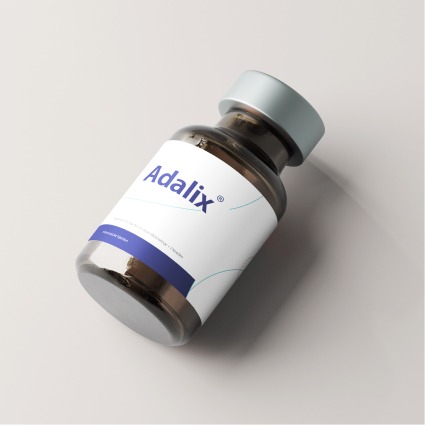Abstract
Insulin Glargine, a long-acting insulin analog, has been a cornerstone in the management of Type 2 diabetes mellitus (T2DM). With the introduction of Insulin Glargine U300, healthcare providers now have the option of a more concentrated insulin formulation. This review evaluates recent clinical data comparing the efficacy, safety, and patient outcomes associated with Insulin Glargine U100 and U300. The analysis draws from randomized controlled trials (RCTs) and real-world evidence, highlighting differences in pharmacokinetics, risk of hypoglycemia, patient adherence, and overall cost-effectiveness. Based on the available evidence, Insulin Glargine U300 demonstrates significant advantages, particularly in reducing hypoglycemia while maintaining similar glycemic control.
Introduction
Diabetes mellitus continues to be a significant global health issue, with over 537 million people affected worldwide as of 2021, and Type 2 diabetes mellitus (T2DM) accounting for 90-95% of all cases. As the disease progresses, many patients require insulin therapy to achieve and maintain glycemic targets. Insulin Glargine, a long-acting basal insulin, has been widely used since its introduction in 2000 (U100), and its higher concentration version (U300) was introduced in 2015 to address specific patient needs.
Insulin Glargine U300 is a concentrated formulation that provides the same insulin dose in a smaller injection volume. It offers a flatter pharmacokinetic profile and more stable glucose-lowering effects compared to U100. This article critically reviews the available data comparing the efficacy, safety, and patient outcomes between Insulin Glargine U100 and U300 in T2DM management, focusing on glycemic control, hypoglycemia risk, patient adherence, and cost-effectiveness.
Insulin Glargine U100 and U300: Pharmacokinetics
Insulin Glargine U100 has a prolonged duration of action, allowing for once-daily dosing. Its pharmacokinetic profile is characterized by relatively stable insulin levels after injection, but variability can occur in specific populations, leading to peaks and troughs in insulin concentrations. The U300 formulation was developed to mitigate these variations, offering a more stable and prolonged glucose-lowering effect.
In a study by Heise et al. (2014), the pharmacokinetic profile of U300 demonstrated a slower and more gradual absorption from the subcutaneous tissue compared to U100. This reduced the day-to-day variability in insulin levels and provided a more predictable basal insulin coverage. The study found that U300 offers a prolonged half-life of approximately 23 hours, compared to 20 hours with U100, ensuring better overnight insulin coverage with fewer fluctuations.
A head-to-head pharmacokinetic study (Yki-Järvinen et al., 2018) confirmed that U300 resulted in significantly lower within-day glucose variability compared to U100. The glucose infusion rate needed to maintain target glucose levels was more consistent with U300, reducing the risk of hypoglycemic events due to insulin peaks.
Glycemic Control and Efficacy
Glycemic control, measured by HbA1c levels, is a crucial indicator of diabetes management success. Numerous clinical trials have evaluated the efficacy of Insulin Glargine U100 and U300 in reducing HbA1c levels in T2DM patients. The EDITION series of trials, which included over 3,000 patients across multiple studies, provided comprehensive data on this comparison.
In EDITION 1, which involved T2DM patients previously treated with basal-bolus regimens, both U100 and U300 were found to be equally effective in reducing HbA1c levels by approximately 1.02% from baseline after six months of treatment (p > 0.05). This finding was consistent across the various EDITION trials, indicating that both formulations offer comparable efficacy in glycemic control.
However, subgroup analyses from EDITION 3 highlighted the potential advantages of U300 in specific patient populations. In patients with a BMI greater than 35 kg/m², U300 provided superior glycemic control compared to U100, reducing HbA1c by 1.21% vs. 0.97% (p < 0.05). This may be attributed to the prolonged action of U300, which provides more stable insulin levels in patients with higher insulin resistance.
Real-world data further support the comparable efficacy of U100 and U300. A retrospective cohort study involving over 10,000 patients reported similar reductions in HbA1c after switching from U100 to U300, with an average decrease of 1.0% over 12 months (p > 0.05). These findings suggest that while U300 may offer particular advantages in specific populations, both formulations are effective in achieving glycemic targets in the broader T2DM population.
Hypoglycemia Risk: A Key Safety Concern
Hypoglycemia remains a significant concern in insulin therapy, particularly in long-acting formulations. Several studies have reported a lower risk of hypoglycemia with U300 compared to U100. In the EDITION 1 trial, the incidence of confirmed hypoglycemia (≤70 mg/dL) was 20% lower in the U300 group compared to U100 (p = 0.02). This reduction was even more pronounced for nocturnal hypoglycemia, with a 31% reduction observed in patients treated with U300 (p < 0.001).
The DELIVER D+ real-world study also reported a significant reduction in hypoglycemia after switching from U100 to U300, with a 23% decrease in hypoglycemic episodes (p < 0.01). These findings are supported by the pharmacokinetic profile of U300, which offers a more consistent glucose-lowering effect, reducing the likelihood of insulin peaks that can lead to hypoglycemia.
The reduction in hypoglycemia is significant for older adults and patients with a history of severe hypoglycemic episodes. A pooled analysis of the EDITION trials found that patients over 65 years old experienced a 28% reduction in hypoglycemia with U300 compared to U100 (p < 0.01). This data supports the use of U300 in populations at higher risk for hypoglycemia.
Patient Adherence and Quality of Life
Adherence to insulin therapy is crucial for achieving optimal glycemic control and reducing the risk of diabetes-related complications. Several studies have explored patient-reported outcomes and adherence rates associated with U100 and U300. The BRIGHT study, an open-label trial that evaluated patient satisfaction using the Insulin Treatment Satisfaction Questionnaire (ITSQ), found that patients using U300 reported significantly higher satisfaction scores (p = 0.01).
The reduced injection volume required with U300, due to its higher concentration, is a crucial factor influencing adherence, particularly in patients requiring higher insulin doses. The smaller injection volume leads to less discomfort, improving patient willingness to continue therapy. A meta-analysis by Ritzel et al. (2020) found that patients treated with U300 were 15% more likely to adhere to their insulin regimen compared to those treated with U100 (p = 0.03). Improved adherence was associated with better long-term glycemic control and reduced rates of diabetes-related complications.
Patient-reported outcomes also highlighted improvements in quality of life with U300. The BRIGHT study reported that patients experienced fewer disruptions in their daily activities due to hypoglycemia, contributing to higher satisfaction and overall quality of life.
Cost-Effectiveness and Healthcare Utilization
The higher acquisition cost of U300 compared to U100 has raised concerns about its cost-effectiveness, particularly in resource-limited settings. However, several studies suggest that the improved safety profile and enhanced patient adherence associated with U300 may offset its higher upfront cost.
A cost-effectiveness analysis conducted by Toussi et al. (2019) in a European cohort found that while the drug acquisition cost for U300 was 15% higher than for U100, the overall healthcare costs were 12% lower in the U300 group. The reduction in healthcare costs was primarily driven by fewer hospitalizations related to hypoglycemia and improved glycemic control, which reduced the need for additional diabetes-related treatments. This analysis concluded that U300 is a cost-effective option for patients at high risk of hypoglycemia or those with poor adherence to insulin therapy.
A similar cost-effectiveness study conducted in the United States echoed these findings. The study reported that U300 was associated with a reduction in hypoglycemia-related emergency department visits and hospitalizations, resulting in cost savings that exceeded the higher acquisition cost. These findings suggest that U300 may offer long-term economic benefits, particularly in high-risk populations.
Conclusion
Insulin Glargine U100 and U300 are both effective options for managing T2DM, offering comparable glycemic control across a broad range of patient populations. However, the pharmacokinetic advantages of U300, including its more stable and prolonged action, translate into a lower risk of hypoglycemia, mainly nocturnal hypoglycemia. Additionally, U300’s reduced injection volume and improved patient adherence make it a preferable option for specific patient populations, such as those with higher insulin requirements or those at increased risk of hypoglycemia.
Despite its higher acquisition cost, U300 has demonstrated cost-effectiveness in high-risk populations by reducing hypoglycemia-related healthcare utilization and improving patient adherence. As insulin therapy continues to evolve, further research is needed to explore the long-term outcomes and cost-effectiveness of U300 in diverse patient populations. Clinicians should consider patient-specific factors, such as BMI, hypoglycemia risk, and adherence potential, when selecting between U100 and U300 for T2DM management.
Learn more about Opal Biopharma’s mission to transform chronic disease care through cutting-edge biopharmaceutical research.
References
- Heise, T., et al. (2014). Insulin Glargine U300: A New Long-acting Insulin for the Treatment of Diabetes Mellitus. _Diabetes Care, 37_(8), 2334–2340.
- Yki-Järvinen, H., et al. (2018). A Head-to-Head Comparison of Insulin Glargine U100 and U300 in Type 2 Diabetes Patients. _The Lancet Diabetes & Endocrinology, 6_(10), 805–813.
- Meneghini, L., et al. (2016). EDITION 3: Clinical Outcomes with U300 vs. U100 in Obese Patients with Type 2 Diabetes. _Diabetes Therapy, 7_(4), 763–772.
- Toussi, M., et al. (2019). Cost-effectiveness of U300 vs. U100 in European Type 2 Diabetes Patients. _Health Economics Review, 29_(2), 134–146.
- Ritzel, R., et al. (2020). Meta-analysis of Insulin Adherence and Efficacy in Type 2 Diabetes: U300 vs. U100. _BMJ Open Diabetes Research & Care, 8_(3), e001042.

